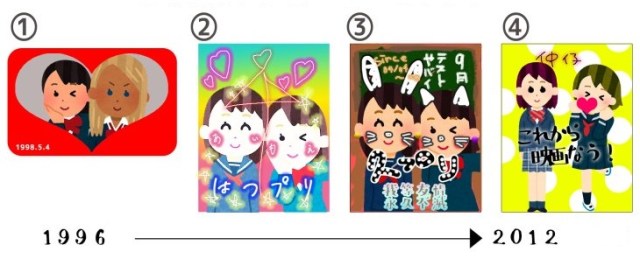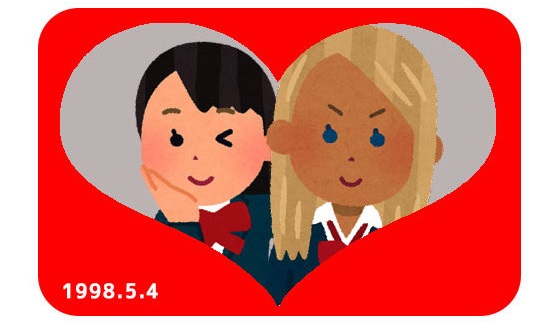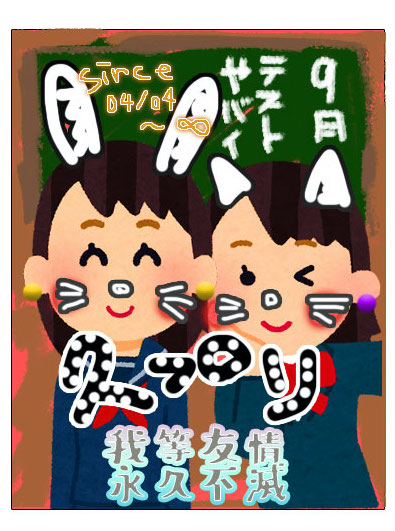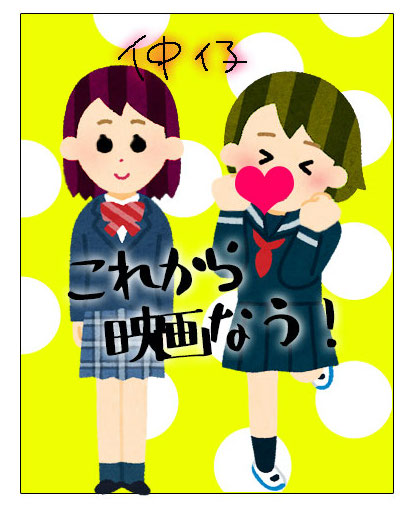
Taking a look back at four eras of the Print Club past.
Purikura (a contracted version of “Print Club”) sticker photos have been part of fashionable teens’ lifestyles in Japan since the mid ‘90s. Individual fashions have changed a lot over the past two-and-a-half decades, though, and in recent years simple purikura without a lot of added accoutrements have been in style.
However, there’s growing interest among today’s Japanese high school girls for the extravagant after-effects of stamps and squiggles that were popular in the earlier days, suggesting that we’re on the cusp of a comeback for the “Heisei purikura” style, Heisei being the Japanese Imperial calendar era that ran from 1989 to 2019. But with Print Club machines first appearing in 1995, there’s 24 years’ worth of Heisei purikura trends, so let’s take a look back at the subsets of purikura history with the help of four of our Japanese-language reporters who experienced them first-hand.
1. Original Heisei purikura era
(as remembered by Mariko Ohanabatake, now 38 years old)

“Purikura were still very new, and the most important thing was choosing a good digital frame/border. We spent a lot of time looking for machines with cool or cute frames that no one else had seen yet.”
● Trendy purikura pose: Standard peace sign
● Trendy words/phrases to add to your photos: your name, the date
2. Early-middle Heisei purikura era
(as remembered by Momo Momomura, 33 years old)

“Purikura booths that made your face look really white were popular. For digital after-effects adding a whole bunch of stamps, especially with rainbow colors, was the big trend. But then when I got into high school, people started saying that using too many pre-set stamps or backgrounds were lame, so the cool thing to do was to use the stylus to add a bunch of hand-written touches or doodles.”
● Trendy poses: Sticking out your tongue, looking down while the picture was taken
● Trendy words/phrases: zuttomo (“friends forever”), ageage (“pumped up”), hastupuri (“first purikura together”), SMILE (written in English).
3. Late-middle Heisei purikura era
(as remembered by Puniko Ninoude, 29 years old)

“We’d just add in all the words and stamps that we could fit! Drawing a heart on your cheek, giving yourself rabbit ears, and using the jewelry stamps were all ways to up your cuteness factor.”
● Trendy poses: Making a peace sign with your chin resting at the base of the V, backwards peace signs, and silly faces in general
● Trendy words/phrases: hatsupuri, ohatsu (“first time”), hisapuri (“first purikura together in a while”), “since ~” (written in English, followed by the date)
4. Late Heisei purikura era
(as remembered by Suzu An, 26 years old)

“By this point, they started bringing out machines where you could use the stylus to digitally alter your hair color, and I did that all the time!”
● Trendy poses: Holding your bangs in your fingers, resting your chin at the base of your peace sign
● Trendy words/phrases: kore kara ~ nau (“after this, we’ll be going to ~,” with the nau/”now” that early Twitter adopters in Japan used to tag their location)
Considering that nowadays pretty much every Japanese teen who has a social life also has a smartphone, and by extension a camera, it might seem kind of weird that purikura booths still exist. But even with the option to whip out their phone and snap a selfie whenever they feel like it, there’s nothing quite like the collaborative fun of piling a group of friends into a booth, collaborating on how to decorate the snapshots, and having an instant, physical reminder of the fun when you retrieve your photos from the slot, and we’ll be watching to see which purikura trends come back, and which new ones get created.
Images: SoraNews24
● Want to hear about SoraNews24’s latest articles as soon as they’re published? Follow us on Facebook and Twitter!

No hay comentarios:
Publicar un comentario